1,700-year-old Roman ruins discovered atop much older Neolithic sacred spring
Archaeologists think veneration of the freshwater spring started in Neolithic times.
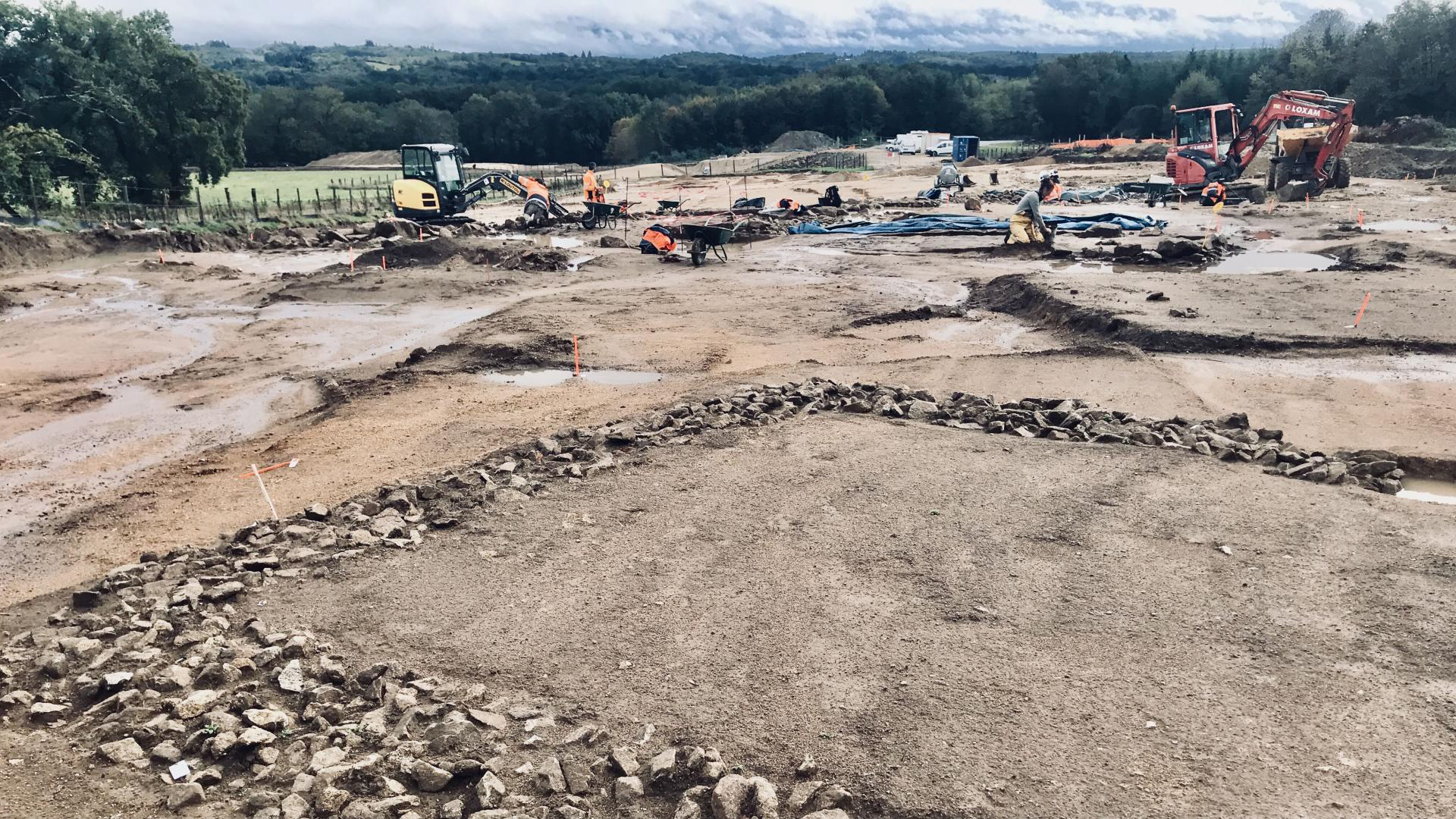
Archaeologists in France have unearthed the Roman-era remains of a landscaped pool and wall around a natural freshwater spring; and they think it was built on the ruins of a much older, probably sacred site that may date back 4,500 to 6,000 years, to the Neolithic period.
The Roman ruins are thought to date to the third century, during the Late Empire period, and the artifacts found there include the ceramic face of a deity or Medusa that was placed near the water source. The site also contains ceramic shards and coins from the late Roman Empire, as well as pieces of flint, including a fragment of a dagger, that are thought to have been offered there in Neolithic times.
According to a translated statement from the French National Institute of Preventive Archaeological Research (INRAP), the ruins were found near the village of Chamborêt, about 12 miles (20 kilometers) north of the southwest-central city of Limoges.
The oldest evidence of structures at the site are traces of a dry-stone building with a rectangular plan and postholes and sandpits from at least one other building that was probably made of wood. Although the excavations haven't determined how old these structures are, artifacts found among them suggest the structures were part of an early home and farm, the statement said.
Related: Roman temple found in France may have been dedicated to war god Mars
Roman-era ruins
After that, the site seems to have been abandoned for many centuries. But it was revived in the third century A.D. during the Roman occupation of the region. The archaeologists have found many fragments of bricks and tiles from that time; some show obvious signs of heating, which suggests a fire was maintained in the area.
The source of the freshwater spring itself, which is still active, seems to have been enclosed at that time by a wooden box buried in a pit filled with flat stones. This, in turn, fed a landscaped pool or basin that was surrounded by an arc or wall of granite blocks, which contained ceramic fragments from the third and fourth centuries.
Get the world’s most fascinating discoveries delivered straight to your inbox.
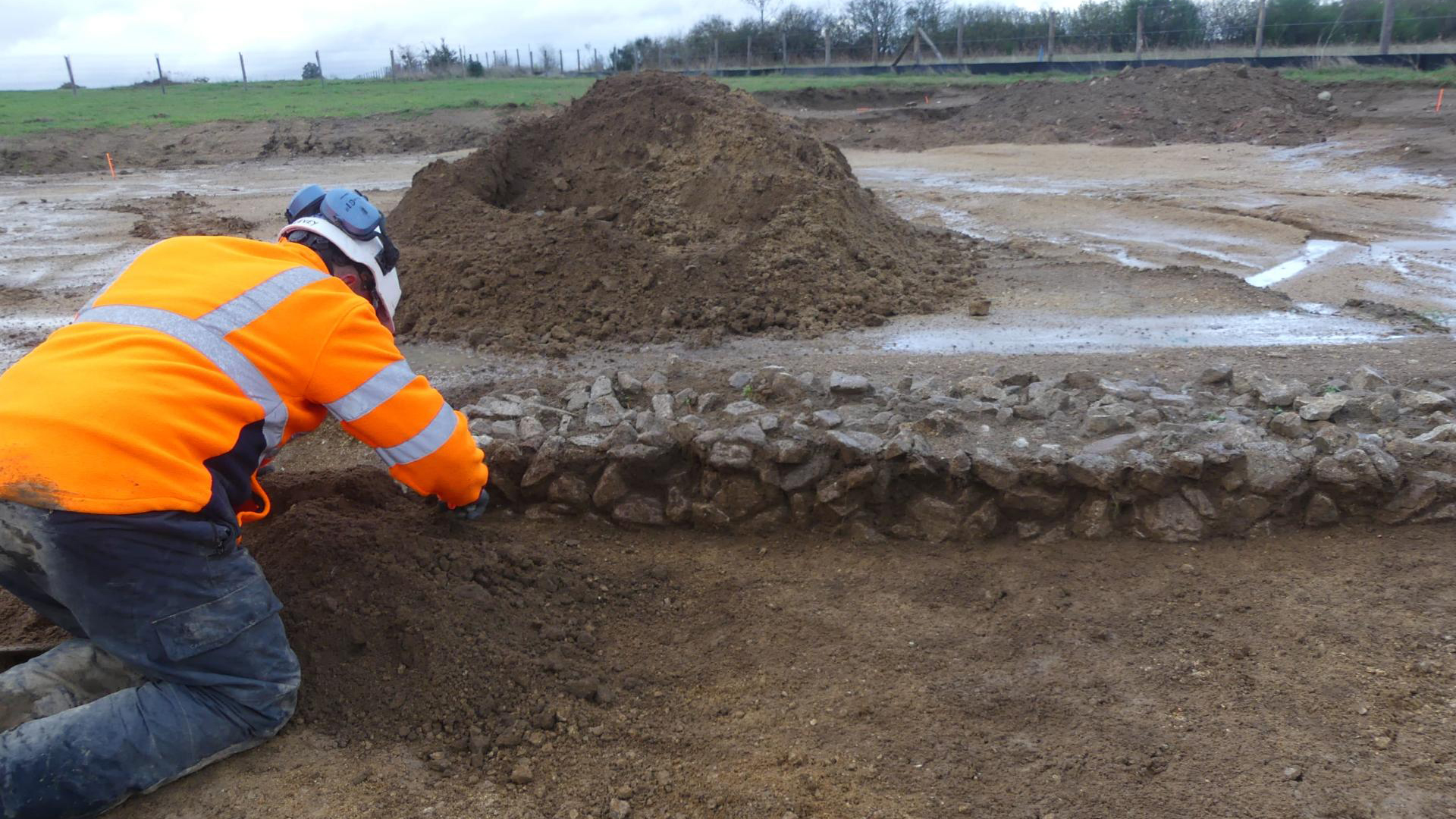
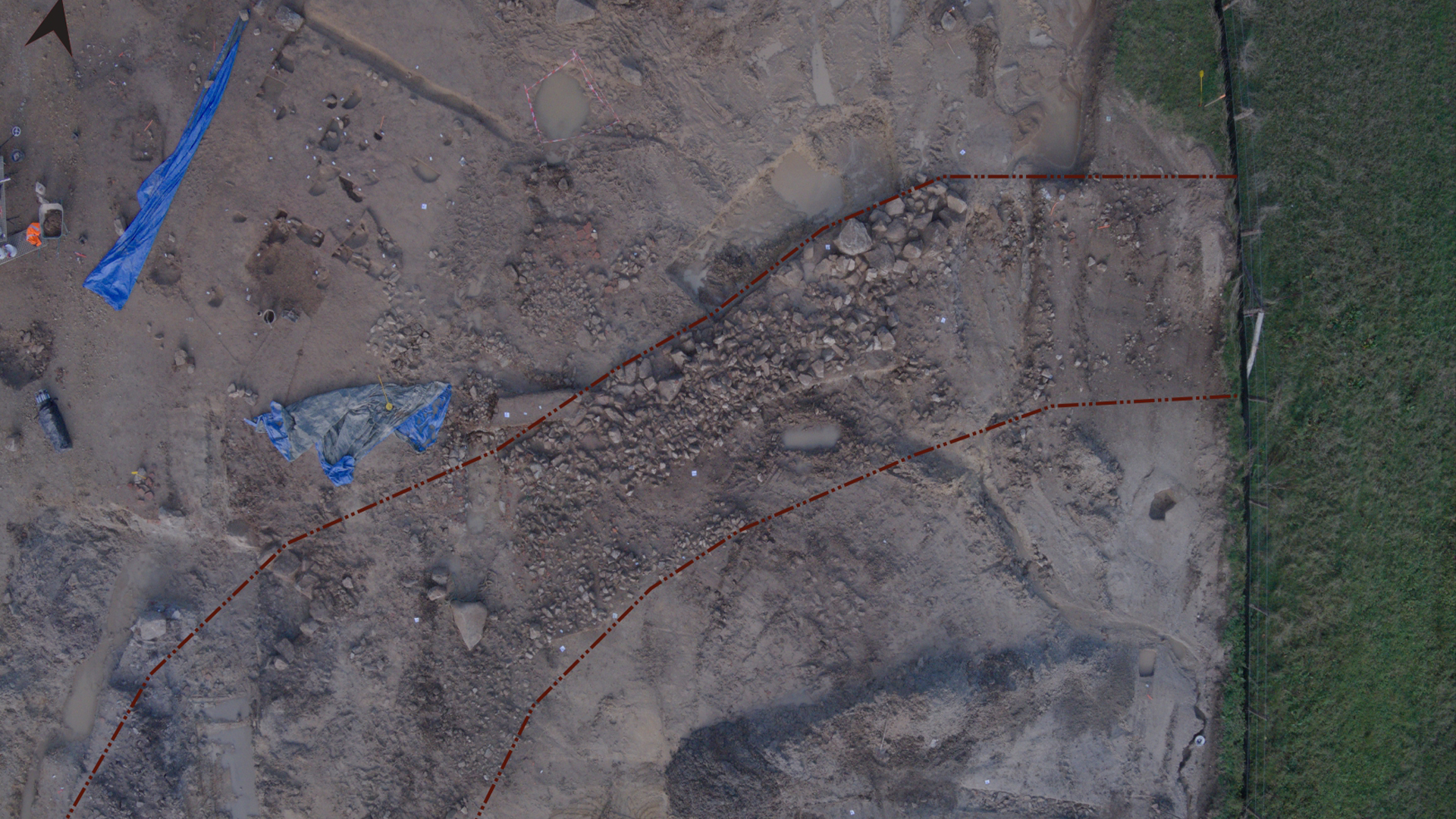
The Roman-era ruins were built on top of the ancient site. "Water clearly played a major role in the occupation from the earliest times," the researchers said in the statement.
The archaeologists also found many late Roman-era coins and a ceramic fragment that depicts part of a face. It is thought to be that of a deity or Medusa, a motif that was common in late Roman times and was thought to ward off evil. The ceramic face seems to have been placed above the landscaped basin fed by the spring and may have represented a water deity.
Ancient weapons
Although the Roman-era ruins around the Chamborêt spring are now the most prominent, there are signs that it was frequented by people in much more ancient times, the statement said.
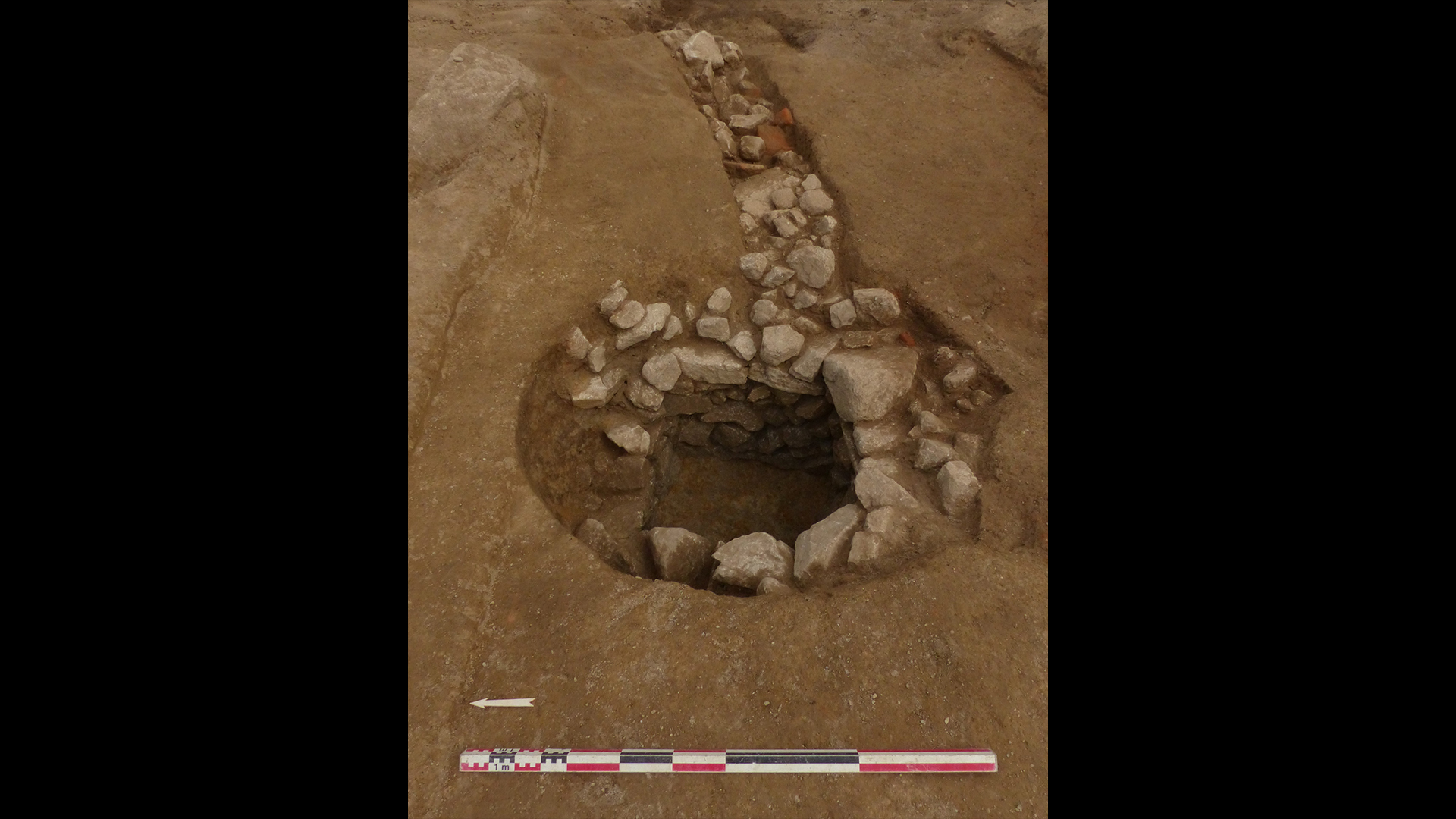
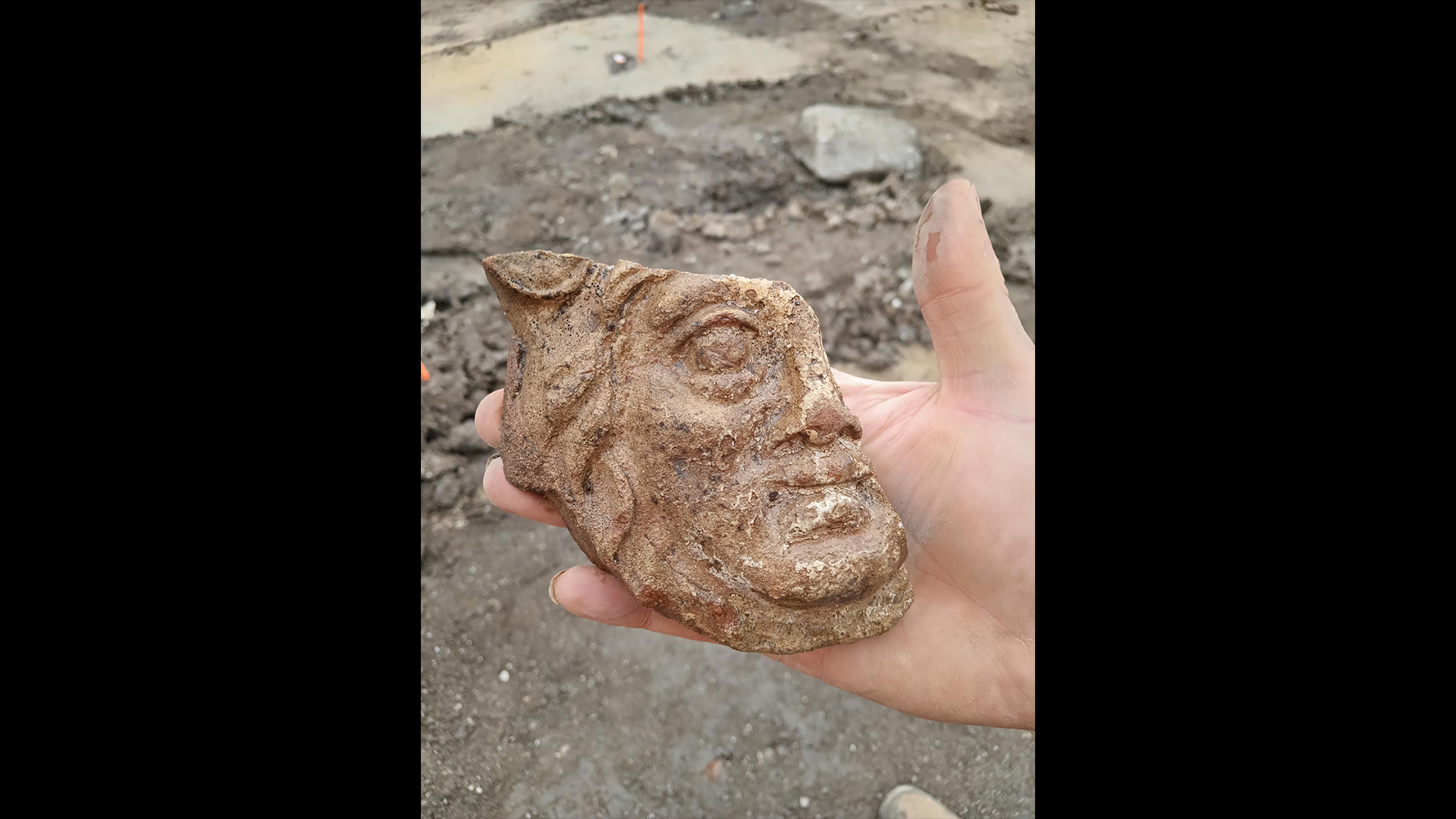
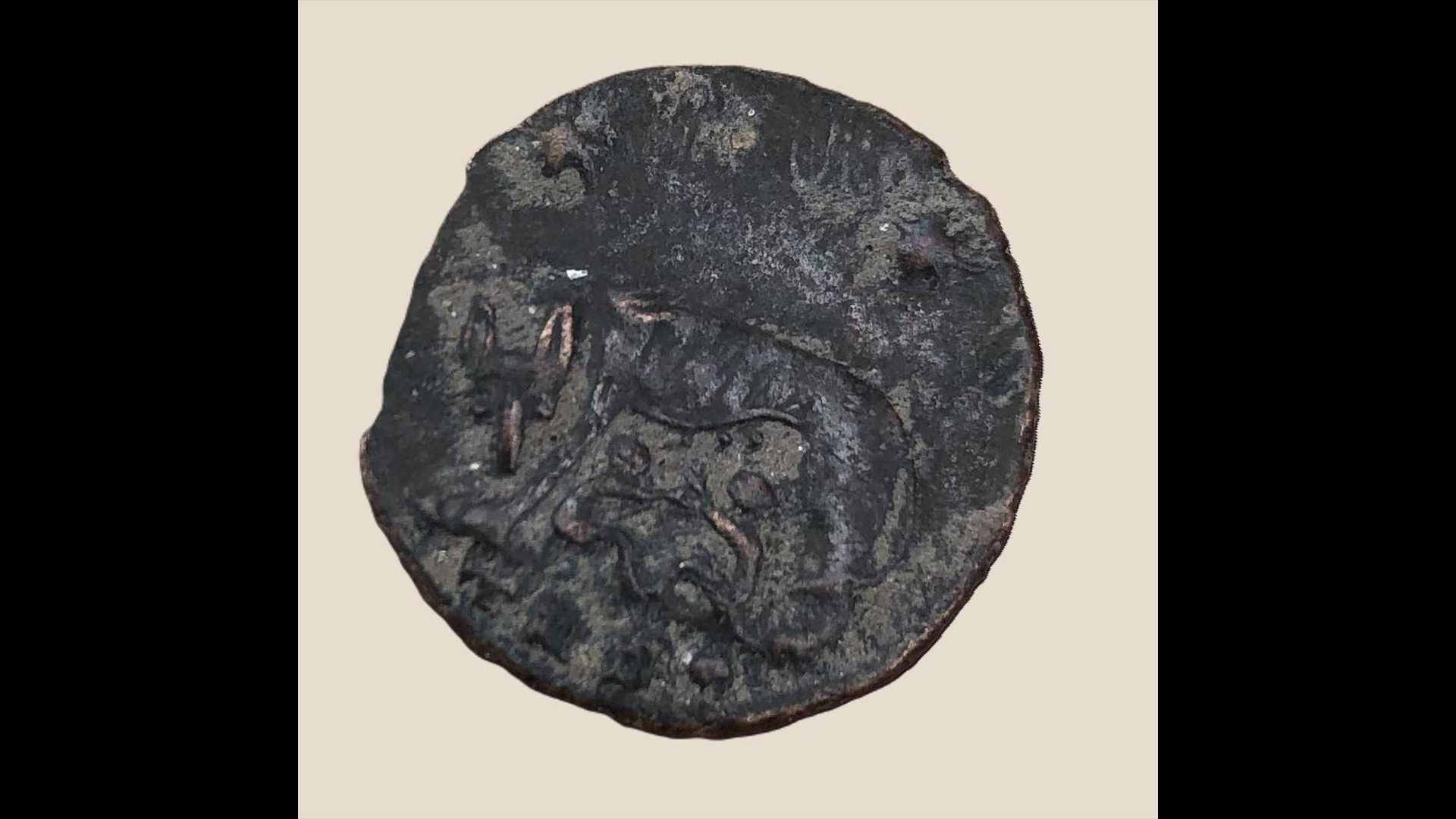
The archaeologists unearthed several pieces of flint at the site, including a fragment of a "Grand Pressigny" dagger, which is named after the Grand-Pressigny archaeological site in central France where several of these Neolithic long blades have been found.
Around the source of the spring, the team also discovered evidence of a pit, which was probably Neolithic and indicated its use at that time, according to the statement.
Further explorations would enable archaeologists to better understand the site and how it was used at different times in history.
"These installations shed light in an unusual way on the occupation in Late Antiquity," the statement said. "This type of rural site undoubtedly illustrates a stage in the gradual transition to the … early Middle Ages."
Tom Metcalfe is a freelance journalist and regular Live Science contributor who is based in London in the United Kingdom. Tom writes mainly about science, space, archaeology, the Earth and the oceans. He has also written for the BBC, NBC News, National Geographic, Scientific American, Air & Space, and many others.


